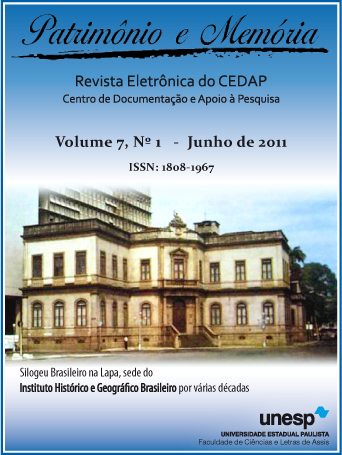Popular festivals and the "invention" of traditions
a reflection on the cavalcades and the fogaréu procession in the state of Goiás (1940-1980)
DOI:
https://doi.org/10.5016/pem.v7i1.3746Keywords:
Festivities, Popular Culture, Tradition, Institutions, FolkloreAbstract
The current reflection on the Intangible Heritage in Brazil has made the appreciation of studies of folkloric festivities possible, considered as collective expressions of multiple forms of language both symbolic of and accountable for the construction of tradition and collective identities. In this work, inquires will be made into some of these concepts, offering a contribution to the historical reflection on the relation between the festivity and the construction of tradition by means of the analysis of two cultural manifestations from the State of Goias: The “Cavalcades” that occur during the celebration of Divine Holy Spirit in the city of Pirenopolis, and the “Torch Procession”, part of Easter Week in the city of Goias. They facilitate the analysis of a process which identifies ideas, institutions and projects, whose objectives were the construction of cultural references that could associate Goias to a set of cultural, folkloric and atavistic practices, creating in this way a field of meanings capable of expressing the solidity of tradition.
References
ALMEIDA, Renato Cavalhadas Dramáticas. In: Folclórica n. 3, Ano 2, Goiânia: Instituto Goiano do Folclore, 1973, p. 37-54.
BANN, Stephen. As invenções da História. Ensaios sobre a Representação do Passado. São Paulo: Editora da UNESP, 1994.
DELGADO, Andréa Ferreira. Goiás: a invenção da cidade "Patrimônio da Humanidade". Horizontes. Antropológicos, Jan./Jun 2005, vol.11, no. 23, p.113.
GARCIA, Marcolina Martins; BREDA Judite Ivanir. Divisão Regional para o estudo e defesa do folclore no Estado de Goiás. Goiânia: Cegraf/UFG, 1972.
HOBSBAWM, E. & RANGER, T. A Invenção das Tradições. Rio de Janeiro: Paz e Terra: Petrópolis. 1997.
JAYME, Jarbas. Esboço Histórico de Pirenópolis. (v. n.1 e n.2). Goiânia, Imprensa da Universidade Federal de Goiás, 1971.
NORA, Pierre. Entre Memória e História: A Problemática dos lugares. In: Revista do programa de pós-graduação da PUC/SP. São Paulo, n. 10 dez./93. Tradução de Yara Maria Aun Khoury.
OVAT. 40 anos Promovendo a Cultura e Resgatando as Tradições. Publicação comemorativa, 2005.
SILVA, Mônica Martins da. A Escrita do Folclore em Goiás: Uma História de Intelectuais e Instituições (1940-1980) Universidade de Brasília, Programa de Pós Graduação em História. (Tese de doutorado). Brasília, 2008.
______. A “invenção do Fogaréu” e os enredos do folclore vilaboense. In: BRITO, Clóvis Carvalho (org.) Luzes e Trevas: Estudos sobre a Procissão do Fogaréu da Cidade de Goiás. Rio de Janeiro: Corifeu, 2008.
______. A Festa do Divino: Romanização, Patrimônio e Tradição em Pirenópolis. Goiânia: Agepel, 2001.
Downloads
Published
How to Cite
Issue
Section
License
Copyright (c) 2011 Patrimônio e Memória

This work is licensed under a Creative Commons Attribution 4.0 International License.
All the content of the journal, except where noted, is licensed under a Creative Commons BY attribution license.


